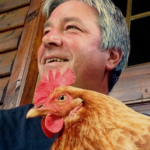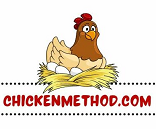
By now, you know that molting is the natural process where chickens shed old feathers to make way for new ones. It usually happens in late summer or early fall and lasts anywhere from a few weeks to a few months.
Feathers provide essential protection and insulation, so this process is critical for a chicken’s health.
But sometimes, things don’t go as smoothly as they should.
Abnormal molting patterns can signal a problem.
You might notice your hens losing feathers unevenly or taking much longer than expected to regrow them. Other signs include bare patches that don’t seem to fill in, feathers regrowing in odd colors or shapes, and chickens appearing stressed or lethargic. Recognizing these signs early can help address issues before they escalate.
Several causes could be behind your chickens’ molting troubles.
Stress is a major factor. Environmental changes, predators, or even changes in flock dynamics can cause significant stress.
Nutrition also plays a big role. A lack of essential nutrients can interfere with feather regrowth.
Don’t forget about parasites. Lice and mites can exacerbate molting problems, causing skin irritation and feather loss.
So, how do you know if what you see is a normal molt or something you need to worry about? Normal molting typically follows a recognizable pattern, starting from the head and neck before moving down the body.
The new feathers, known as pin feathers, should look healthy and well-formed. If you find the process dragging on too long or the regrowth seems patchy and unhealthy, it might be time to consider external factors.
Understanding these basics helps catch and resolve issues early. Keep an eye on your flock’s overall behavior and physical condition. With a little vigilance, you can ensure that molting remains a healthy and natural part of your chickens’ lives.
Effective Solutions for Fixing Molting Issues
Molting can be tough on your flock, but some strategies can help. First things first, basic care during molting is crucial. Your chickens need a calm and stress-free environment. Keep them away from loud noises and possible predators. Regularly clean their living space to make them feel secure.
Next up, let’s talk about diet. Molting requires a lot of protein and other nutrients. Consider providing high-protein feeds or supplements. Things like mealworms, sunflower seeds, and even scrambled eggs can give them that extra boost they need. Also, don’t forget the importance of vitamins and minerals. Supplements rich in vitamin E, calcium, and phosphorus can make a world of difference.
Parasites can wreak havoc on molting. Regular dust baths are essential. You can also add diatomaceous earth to the bathing area to help control lice and mites. It’s a natural way to keep these pesky invaders at bay and ensure your chickens’ skin stays healthy.
Here’s a word of caution where diatomaceous earth is concerned. The tiny particles of DE are easily inhaled and can cause respiratory issues for your chickens, so try to keep airborne dust to a minimum, say, if you toss it across the coop instead of sprinkling, that sort of thing.
Reducing stress is another critical point. Chickens are creatures of habit and don’t adapt well to sudden changes. Keeping a consistent routine helps.
Make sure they have enough space, and consider separating overly aggressive birds to reduce social stress. Sometimes, just a few minor adjustments in their environment can vastly improve their well-being.
Knowing when to seek veterinary assistance is also key. If you notice severe feather loss, skin irritations, or your chickens seem unwell despite your efforts, don’t hesitate to consult a vet. Getting professional advice to rule out any underlying health issues is always better.
Preventive Measures and Control Strategies for Molting
Creating a molting-friendly environment is a great starting point. Make sure your chickens have a clean, spacious, and secure coop. Good ventilation is key, but it shouldn’t be drafty. This balance helps keep your chickens comfortable.
Routine health check-ups are invaluable. Regularly inspect your flock for any signs of illness or distress. Early detection of issues like parasites, nutritional deficiencies, or infections can keep molting problems at bay. Consider consulting your vet for routine health check-ups and vaccinations.
Proper nutrition is the cornerstone of preventing molting problems. A balanced diet rich in proteins and essential nutrients is vital. Quality feed formulated for laying hens usually does the trick. You can also add some leafy greens and occasional treats like fruits to keep their diet varied and nutritious.
Seasonal preparation is another important factor. As molting season approaches, begin to slowly adjust their diet and environment to meet their upcoming needs. Think about increasing protein in their diet as the molting season starts and ensuring their living space is as stress-free as possible.
Continuous monitoring and early intervention are the best strategies to control molting. Keep an eye on each chicken’s molting progress. If you spot any irregularities or signs of trouble, address them immediately. Quick action can prevent minor issues from turning into major problems.
Please let me know if you have any questions.
Dave

Chickenmethod.com

